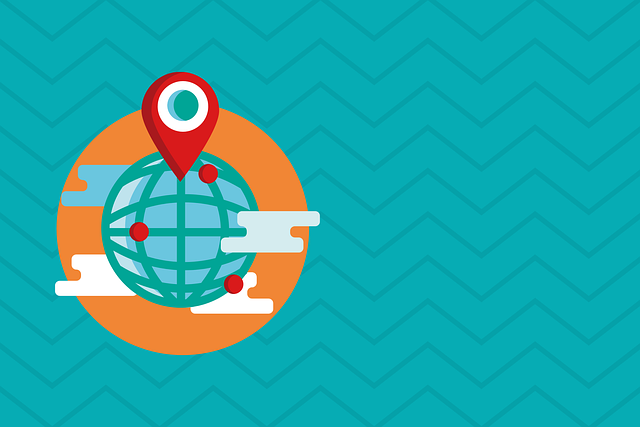A well-organized website architecture, achieved through site structure SEO, enhances user experience and search engine optimization (SEO) success. Effective internal linking strategies, including relevant anchor text, equal link distribution, and content prioritization, improve site navigation and signal search engines. This leads to better crawlability, increased authority, higher rankings, organic traffic, and improved conversion rates by optimizing for both users and algorithms. Measuring internal link performance through analytics tools is crucial for refining the site structure and SEO strategy.
In today’s digital landscape, a robust site structure is paramount for SEO success. Understanding how users navigate your website forms the foundation of effective internal linking strategies. This guide delves into the core components of modern SEO practices, focusing on optimizing content connections. By employing strategic link placement, you enhance user experience while boosting search rankings. Explore best practices, measurement techniques, and key insights to elevate your internal linking campaign and achieve remarkable SEO results.
- Understanding Site Structure for SEO Success
- Internal Linking: The Foundation of Modern SEO
- Optimizing Content Connections Within Your Site
- Strategic Link Placement for Enhanced User Experience
- Measuring Internal Link Performance and ROI
- Best Practices for Effective Internal Link Campaigning
Understanding Site Structure for SEO Success

A well-structured website is fundamental for achieving SEO success and enhancing user experience. Understanding your site’s architecture and hierarchy is key to optimizing for search engines. The site structure SEO tutorial focuses on organizing content in a logical manner, ensuring each page has a clear purpose and is easily accessible. This involves creating a hierarchical layout with categories and subcategories, allowing users and search algorithms to navigate effortlessly.
By implementing effective site structure SEO optimization, you can improve internal linking, which plays a vital role in boosting your website’s SEO. A strategic link placement within relevant content helps distribute authority across your pages, strengthening the overall signal sent to search engines. This, in turn, leads to better rankings and increased visibility for your target keywords.
Internal Linking: The Foundation of Modern SEO

Internal linking is a cornerstone strategy in modern SEO, fundamentally shaping how search engines crawl and index websites. It involves creating strategic connections between pages within your site, fostering a seamless navigation experience for users while providing crucial cues to search algorithms. A well-designed internal link structure enhances the overall site structure SEO, ensuring that each page is accessible and relevant to both visitors and search engine crawlers.
By implementing effective internal linking practices, you can significantly improve your site’s architecture, boosting its visibility in search results. This involves a thoughtful approach, including using relevant anchor text, distributing links evenly across pages, and prioritizing essential content. A site structure SEO tutorial or tips can guide you in creating a hierarchical system that facilitates easy navigation and empowers search engines to understand your website’s context, ultimately driving better rankings and increased organic traffic.
Optimizing Content Connections Within Your Site

A well-optimized site structure is a cornerstone of any robust SEO strategy. By strategically connecting your content within the site, you enhance user experience and tell search engines where to find relevant information. This involves organizing pages in a logical hierarchy, using breadcrumbs, and internal linking to guide both users and search algorithms through your site’s tapestry.
Implementing effective site structure SEO tips requires careful planning. Ensure that each page has a clear purpose and is linked to related content. A balanced and hierarchical site structure, where primary pages link to secondary ones, improves crawlability and helps consolidate authority across your website. This, in turn, boosts your site’s visibility in search results, driving more organic traffic and potential leads.
Strategic Link Placement for Enhanced User Experience

Strategic Link Placement is a key component of modern SEO practices, designed to enhance user experience while optimizing your site’s structure for search engines. By thoughtfully integrating internal links throughout your content, you create a seamless navigation network that benefits both users and search algorithms. This involves carefully considering the context and relevance of each link, ensuring they offer value by directing readers to related or complementary resources within your site.
A well-structured site with strategic link placement improves user engagement and comprehension. It allows visitors to discover new content easily and encourages them to explore more of your website. For SEO, this translates into lower bounce rates, longer session durations, and better ranking potential. Utilizing site structure SEO tips such as anchor text optimization and linking to support hierarchical page relationships can further strengthen the overall architecture, making it easier for search engines to crawl and index your pages effectively in a site structure SEO tutorial sense.
Measuring Internal Link Performance and ROI

Measuring the performance of internal links is a crucial aspect of modern SEO practices. By analyzing link clicks and user behavior, you can understand which pages within your site are most engaging and valuable. Tools like Google Analytics and Search Console provide insights into click-through rates (CTRs), bounce rates, and time on page, all of which help in gauging the effectiveness of your site structure SEO tips. Regularly monitoring these metrics allows for continuous optimization of your internal linking strategy, ensuring that your site’s architecture supports user experience and search engine visibility.
To maximize the return on investment (ROI) from internal linking, focus on creating a well-optimized site structure SEO. This involves strategically placing links within relevant content to guide users and search engines alike. By interlinking pages that share common themes or topics, you enhance the overall site structure SEO optimization, making it easier for both visitors and algorithms to navigate your website. As a result, improved internal linking can lead to better keyword rankings, increased organic traffic, and ultimately, higher conversion rates.
Best Practices for Effective Internal Link Campaigning

To craft an effective internal linking strategy, start by understanding your site’s structure. A well-organized site architecture is the foundation for successful SEO and user navigation. Implement a hierarchical structure that categorizes content logically, making it easier for both search engines and users to navigate through your pages. This involves creating a clear parent-child relationship between pages, ensuring each piece of content has relevant links pointing to it from authoritative sources within your site.
When planning your internal linking campaign, consider using anchor text that is descriptive and contextually relevant. Avoid generic keywords and opt for phrases that accurately represent the target page’s content. Diversify your anchor text to include a mix of exact match, partial match, and branded terms, reflecting natural link building patterns. Additionally, focus on interlinking related content clusters, allowing users to discover complementary resources seamlessly and boosting the overall SEO performance of your site through improved user experience and reduced bounce rates.
